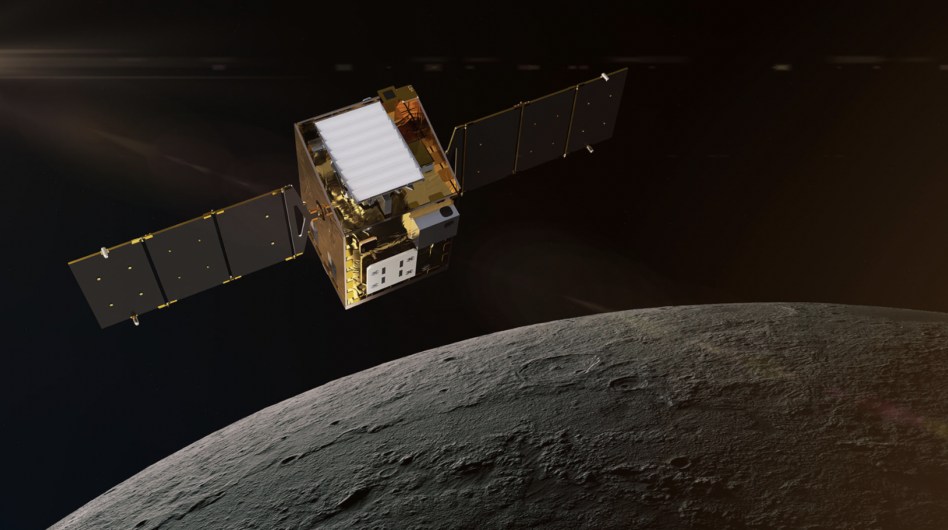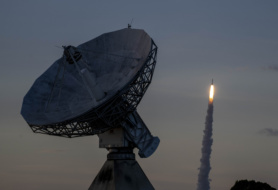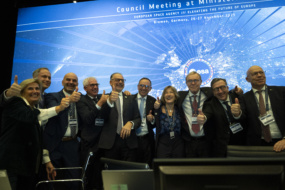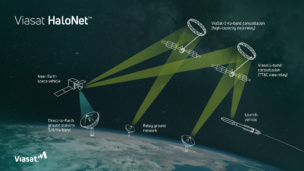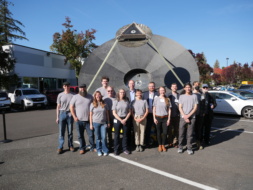Lockheed Martin is establishing Crescent Space Services, a lunar infrastructure subsidiary focused on communication between the Earth and Moon, the contractor announced Tuesday.
“We’ve seen the Artemis program and how it has been able to really get the attention of the world,” Crescent CEO Joe Landon told Payload. “We sat down and said how can we accelerate that process? What can we do to make every mission easier? And we came up with communications and navigation, because it’s fundamental infrastructure.”
The details: Crescent will deploy a satellite network to lunar orbit called Parsec. The birds will facilitate fast communication between the Moon and Earth.
- Lockheed Martin will build two Parsec satellites on its Curio small-sat platform.
- Crescent’s 10-person team will then assume ownership of the birds and operate them using an infrastructure-as-a-service model.
- The subsidiary filed for a special blanket authorization to be able to offer government and commercial customers broad usage of the Crescent lunar communication network.
“[Customers] can just plug into our network, much like your cell phone connects to the nearest cell phone tower,” Landon said.
The lunar opportunity: With the Artemis program aiming to establish a permanent presence on the Moon by the end of the decade, Lockheed Martin is proactively setting up lunar communication infrastructure in advance of demand.
Going forward: Crescent anticipates it will deploy its first satellite to lunar orbit by 2025. As the cislunar economy grows, the company may look to expand its product offerings to include a broad range of infrastructure services.
